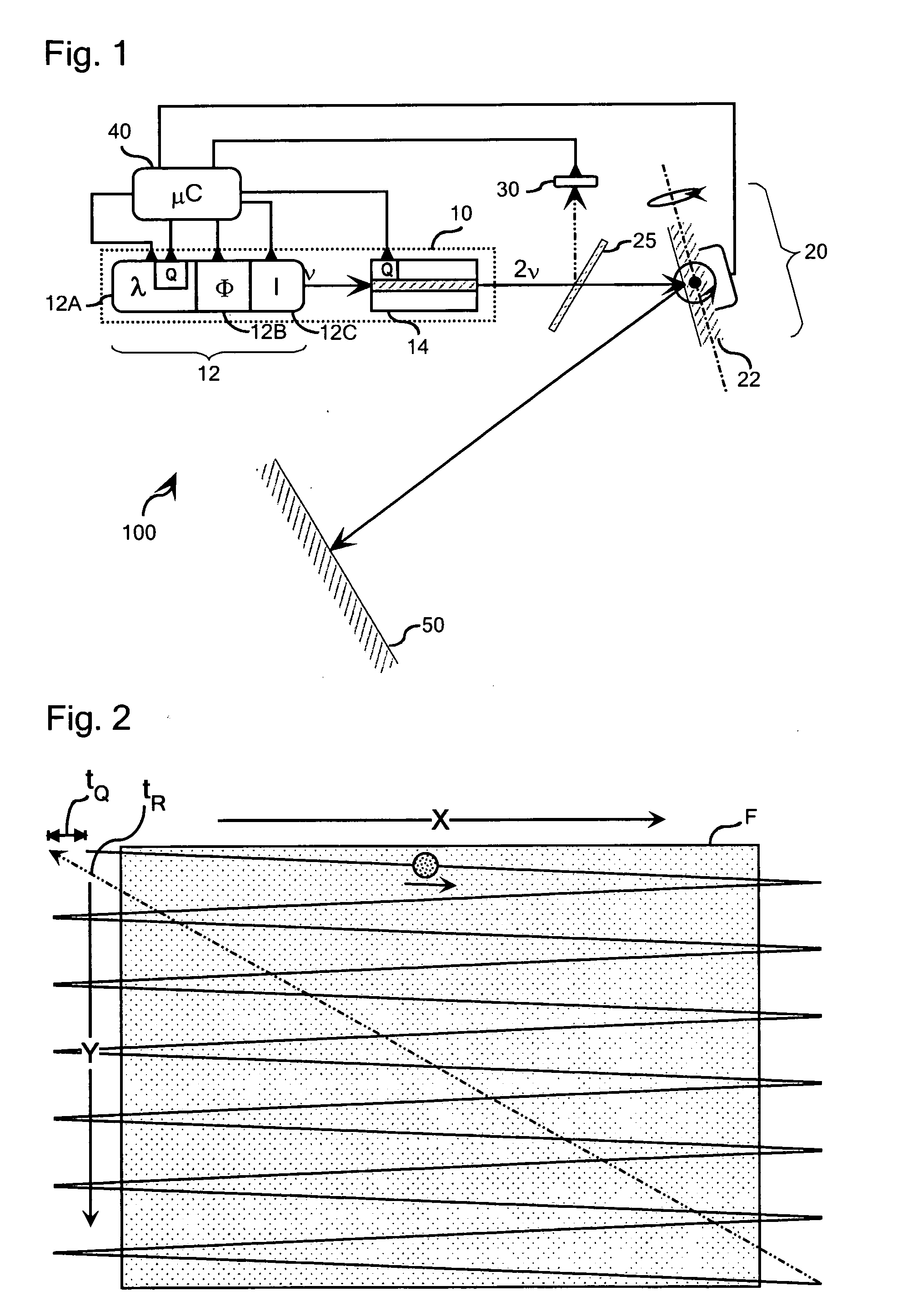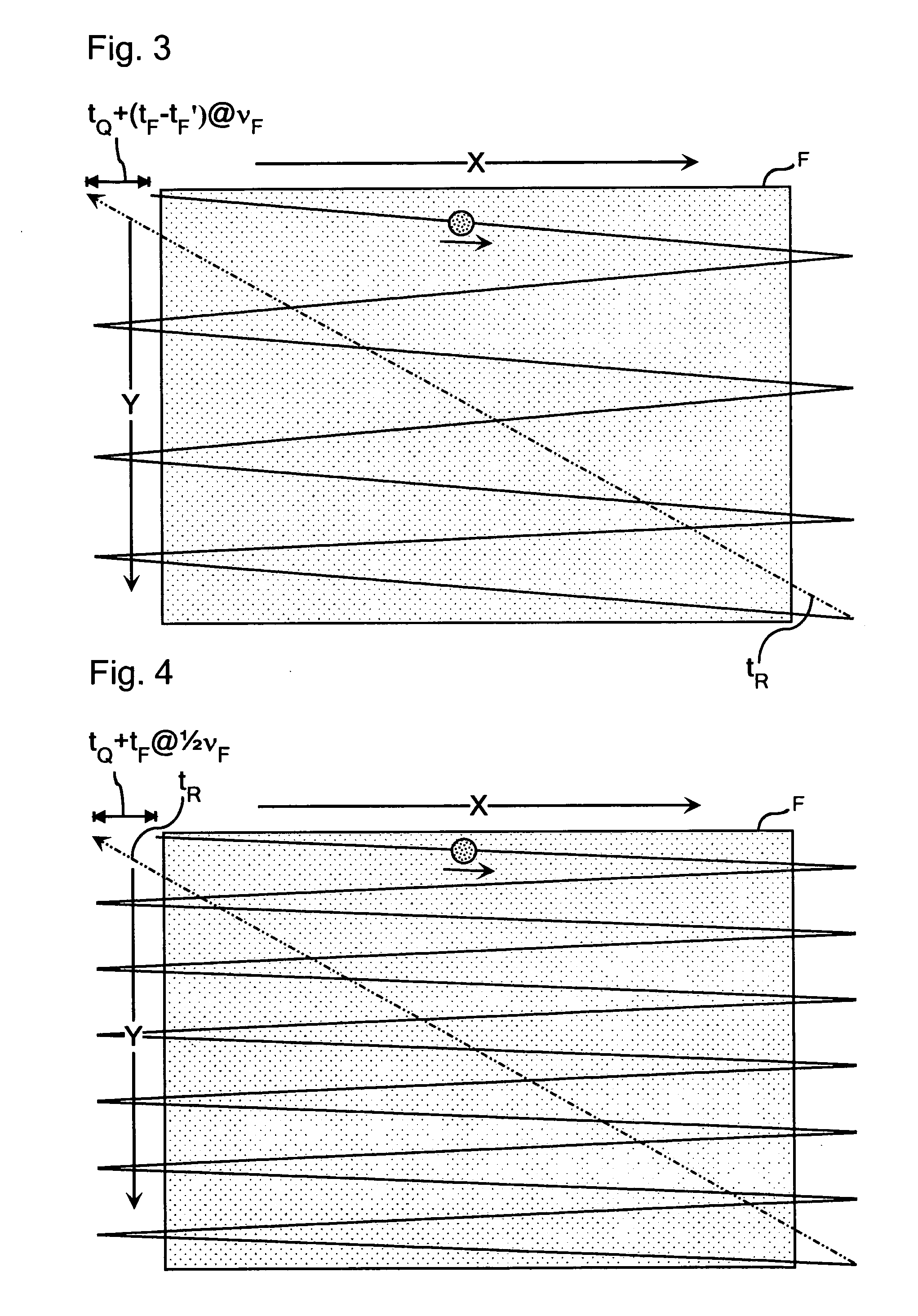Optimized signal control in frequency-doubled laser sources
a frequency-doubled laser and signal control technology, applied in the field of semiconductor lasers, can solve the problems of not contributing directly to the creation of power, saving a significant amount of power consumption, and power consumption of a frequency-doubled laser system, so as to improve emission quality, stabilize emission, and optimize efficiency
- Summary
- Abstract
- Description
- Claims
- Application Information
AI Technical Summary
Benefits of technology
Problems solved by technology
Method used
Image
Examples
Embodiment Construction
[0012]Referring initially to FIG. 1, the concepts of the present disclosure may be conveniently illustrated with general reference to a laser source 10 comprising a two or three-section DBR-type semiconductor laser 12, although the concepts of the present disclosure can be executed in the context of various types of semiconductor lasers, the design and operation of which is described generally above and is taught in readily available technical literature relating to the design and fabrication of semiconductor lasers. In the context of a frequency-doubled light source of the type illustrated in FIG. 1, the DBR laser 12 is optically coupled to a light wavelength conversion device 14. The DBR laser 12 illustrated schematically in FIG. 1 comprises a wavelength selective section 12A, a phase section 12B, and a gain section 12C. The light beam emitted by the semiconductor laser 12 can be either directly coupled into the waveguide of the wavelength conversion device 14 or can be coupled th...
PUM
 Login to View More
Login to View More Abstract
Description
Claims
Application Information
 Login to View More
Login to View More - R&D
- Intellectual Property
- Life Sciences
- Materials
- Tech Scout
- Unparalleled Data Quality
- Higher Quality Content
- 60% Fewer Hallucinations
Browse by: Latest US Patents, China's latest patents, Technical Efficacy Thesaurus, Application Domain, Technology Topic, Popular Technical Reports.
© 2025 PatSnap. All rights reserved.Legal|Privacy policy|Modern Slavery Act Transparency Statement|Sitemap|About US| Contact US: help@patsnap.com



